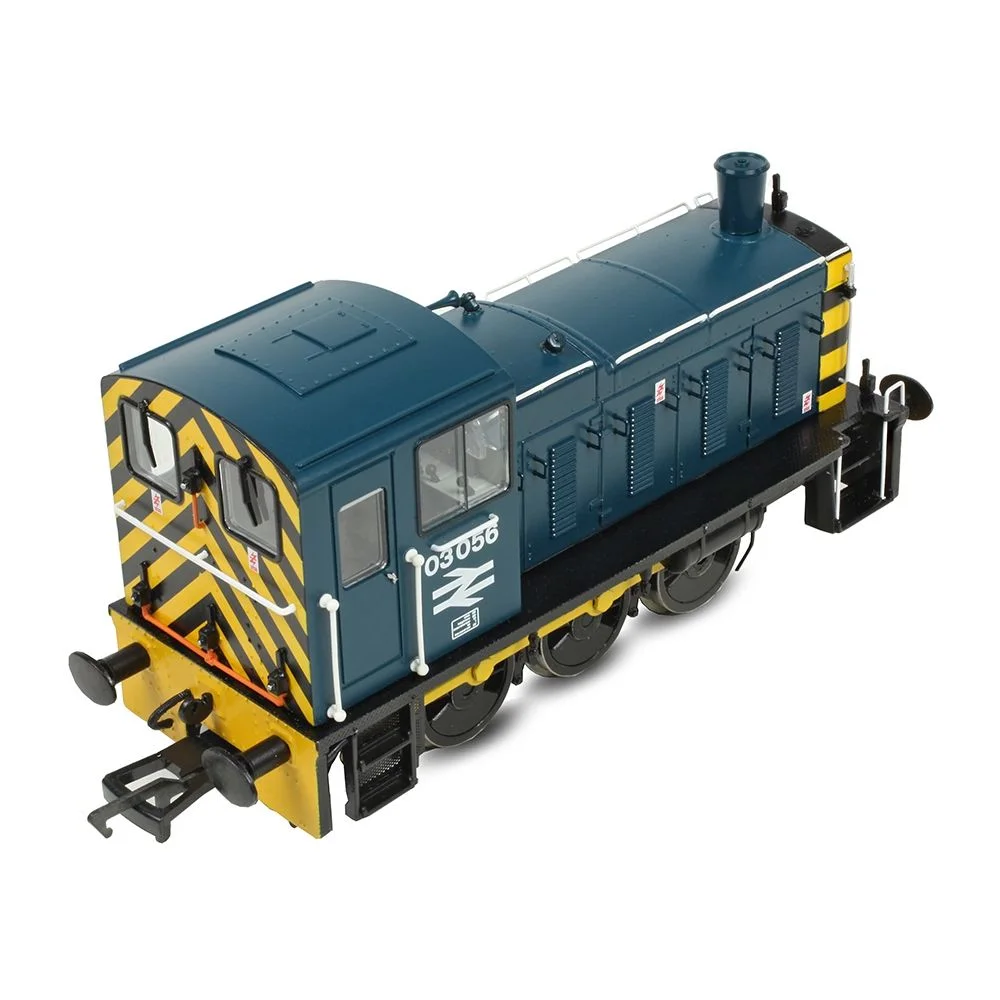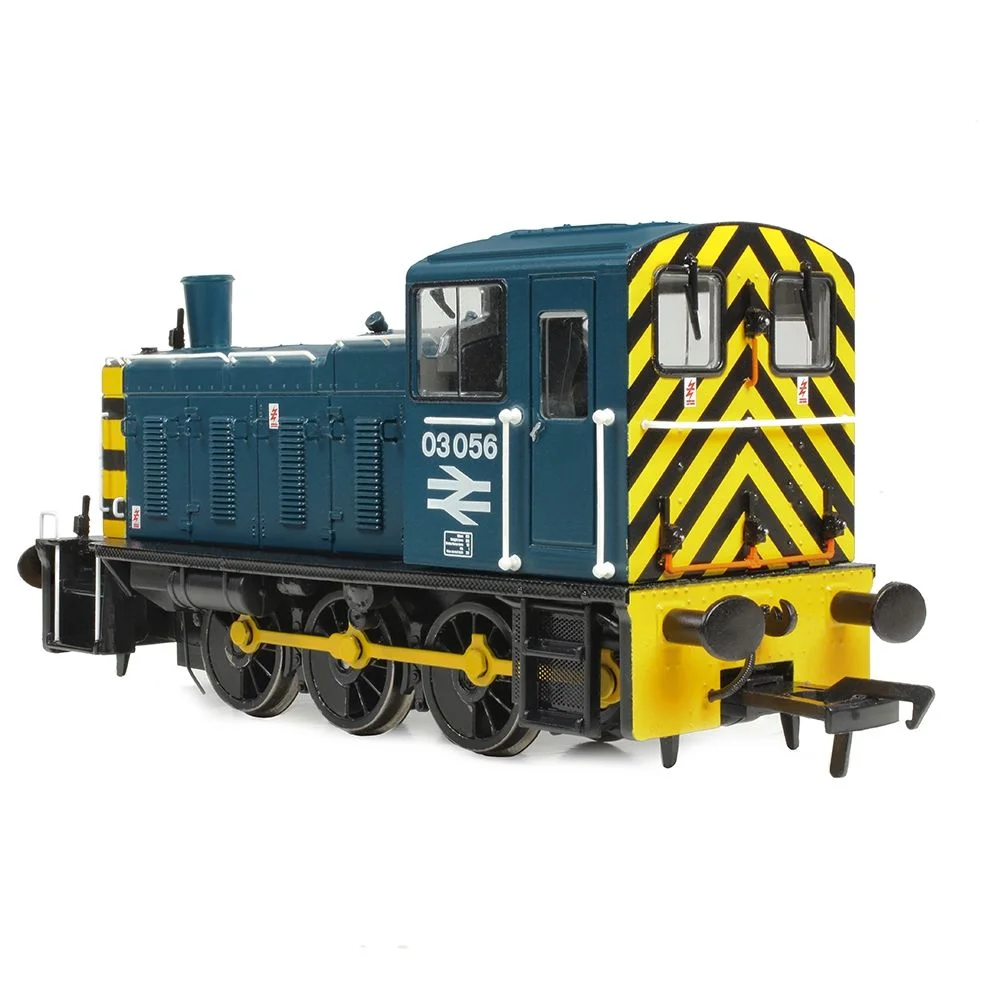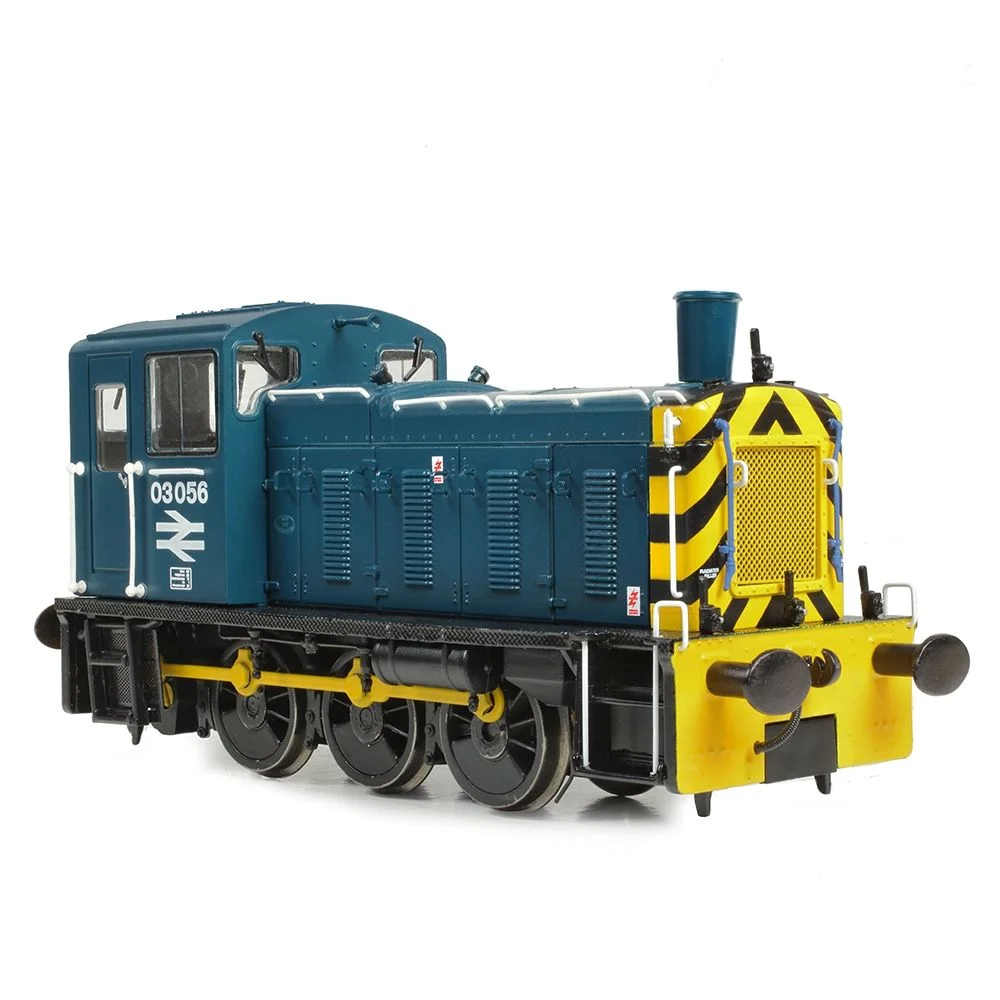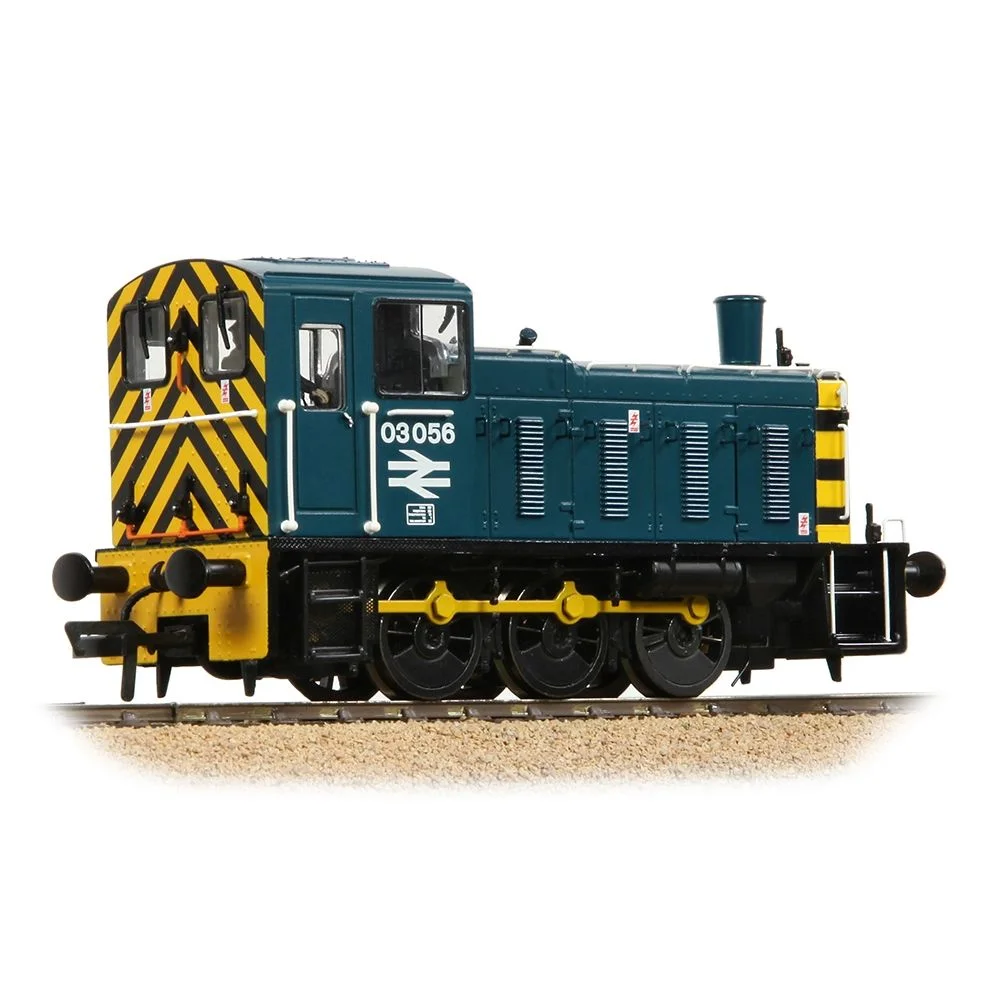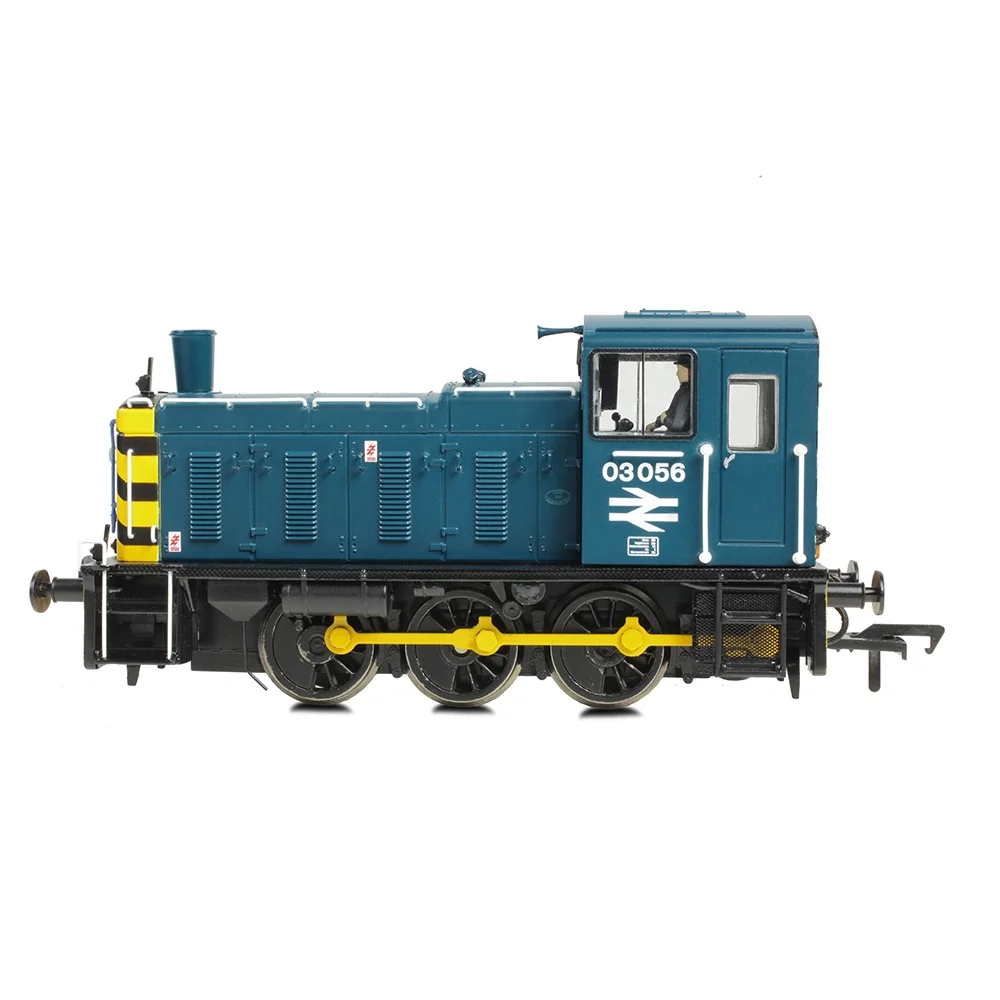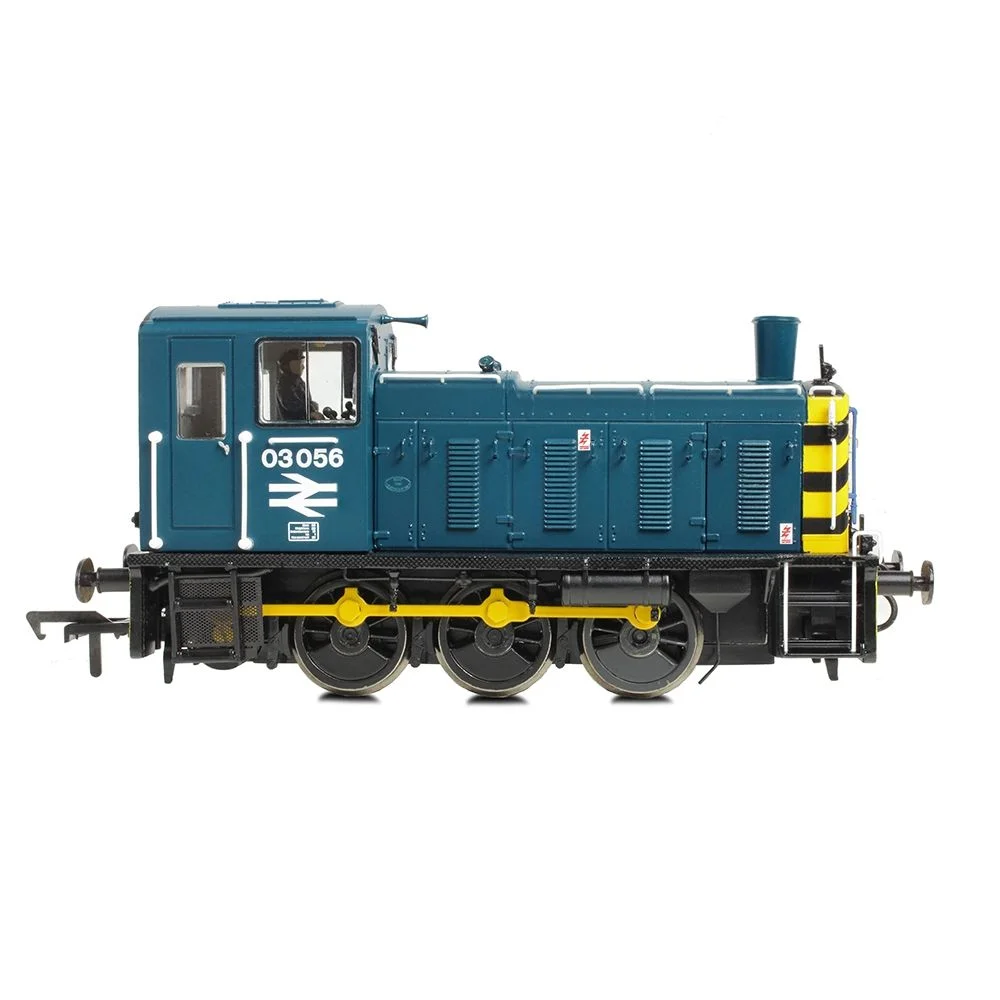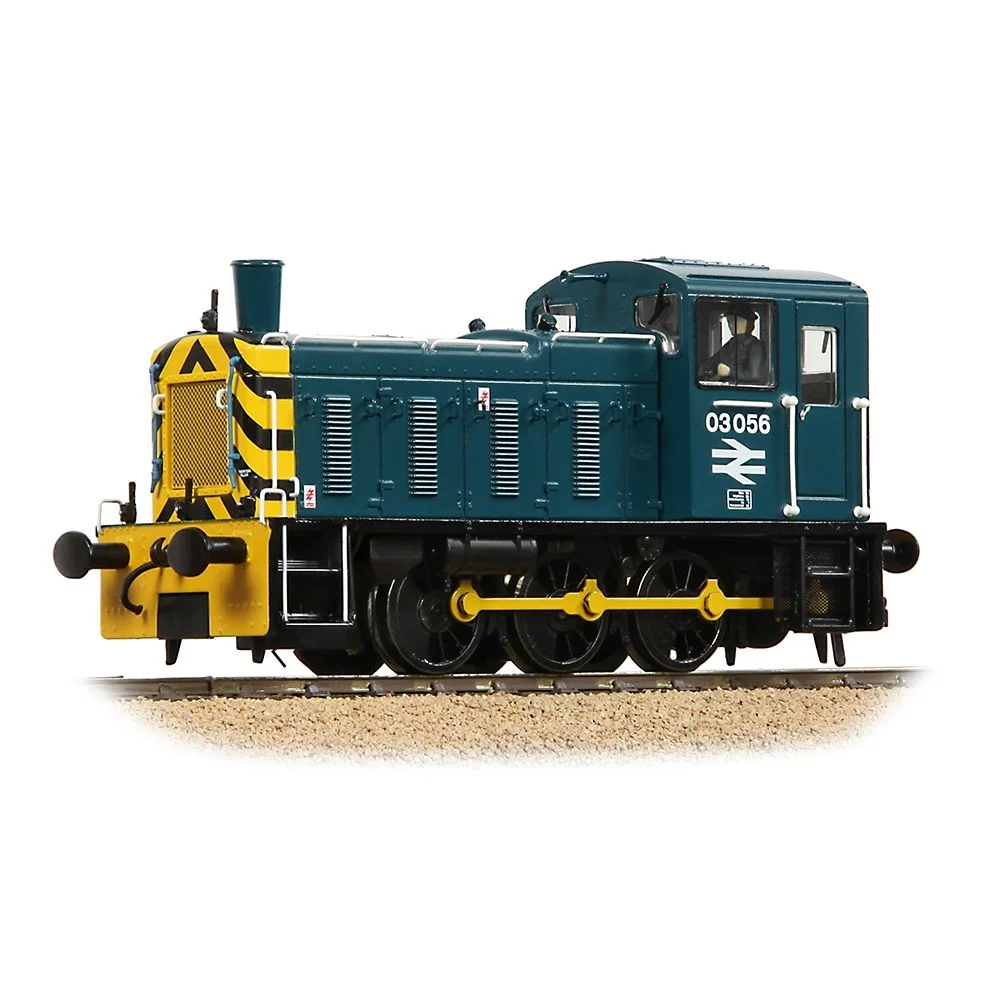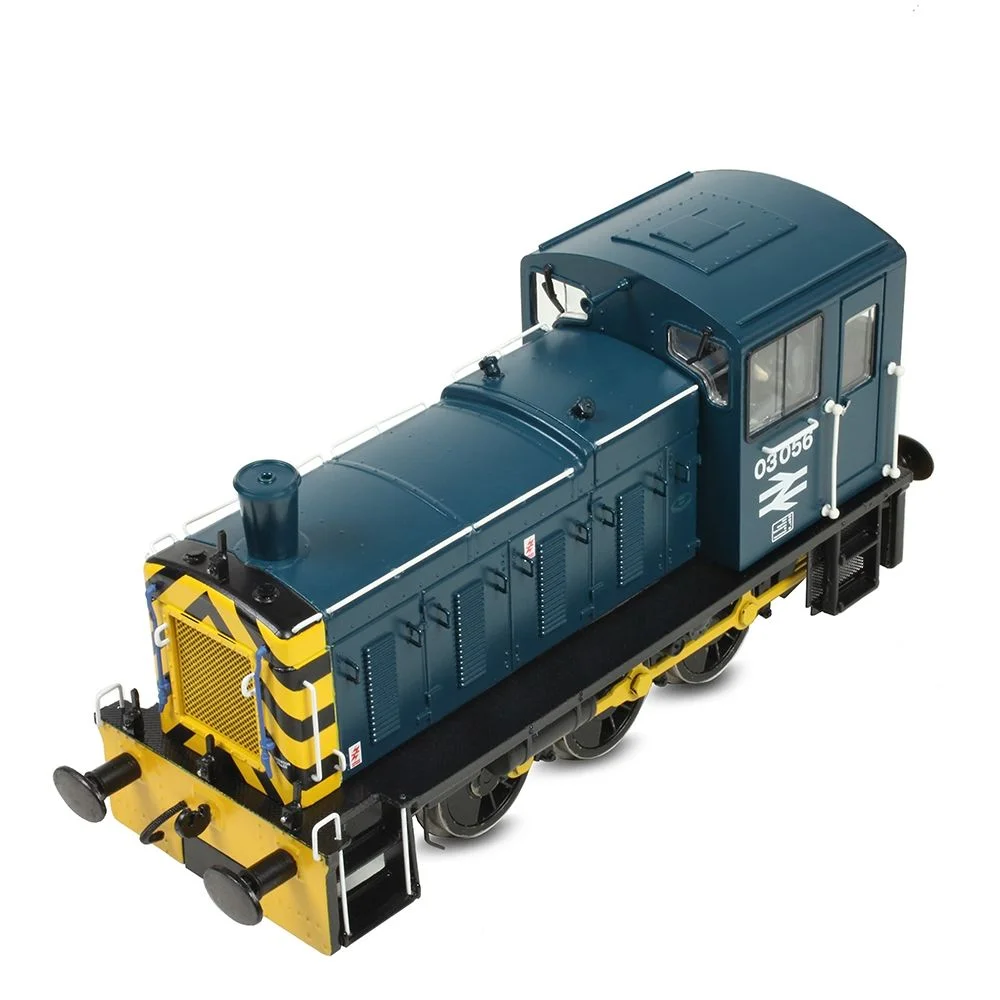Bachmann 31-362BSF
British Rail Class 03 03056 British Rail Blue
Tooling
In 2017, Bachmann announced a complete retooling of its OO gauge British Rail Class 03 shunter, replacing the 2010 design with an all-new model built to modern standards. This upgrade delivered exceptional fidelity, improved mechanical engineering, and full digital capability, positioning the Class 03 as one of the most detailed and technically advanced small shunters in the Bachmann Branchline range.
Tooling Features
- Scale: OO gauge (1:76), designed for first-radius curves (371 mm) and above.
- Construction: Completely new tooling with a highly detailed plastic bodyshell, separate handrails, lamp irons, etched grilles, and fine pipework. The chassis is die-cast for strength and weight.
- Detailing: Fully detailed cab interior with painted controls and crew figure, flush glazing, prototypical buffer beam detail, and accurate jackshaft representation.
- Couplings: Equipped with NEM pockets and tension-lock couplings; optional cosmetic buffer beam fittings supplied for scale appearance.
Mechanical & Electrical
- Motor & Drive: High-quality coreless motor with precision gearing for smooth, slow-speed control; all axles driven.
- Pickups: Comprehensive wheel pickup for reliable electrical continuity.
- Minimum Radius: Operates on first-radius curves, making it suitable for compact layouts.
- Lighting: Factory-fitted directional LED lighting and illuminated cab (on DCC operation).
- Weighting: Die-cast chassis ensures excellent traction and stability.
DCC Capability
- Factory-fitted with a Next18 decoder socket for easy DCC installation.
- Sound-fitted versions available with ZIMO decoder and speaker pre-installed.
- Provision for stay-alive capacitors and speaker upgrades for enhanced performance.
Liveries Produced
The 2017 tooling has been released in a wide range of authentic liveries, including:
- BR green with early and late crests
- BR blue with wasp stripes
- Departmental and industrial schemes
- Special editions for preservation-era locomotives
Reviews & Commentary
- Widely praised for its exceptional detailing, including fine handrails, etched components, and accurate paint application.
- Performance reviews highlight smooth, quiet running and excellent slow-speed control, ideal for shunting duties.
- Criticism is minimal, with occasional comments on tight internal space for aftermarket sound upgrades.
Media & Social Media Insights
- YouTube reviews showcase the model’s lighting features, cab detail, and sound quality on factory-fitted versions.
- Forum discussions note the ease of decoder installation and reliability of the Next18 interface.
- Collectors regard this tooling as a benchmark for small diesel shunters in OO gauge.
Other Interesting Information
- Accessory packs include buffer beam detailing parts and scale couplings for display use.
- Recommended running-in period improves gearbox bedding and long-term performance.
- The model’s compact size and first-radius capability make it ideal for micro-layouts and shunting puzzles.
Bachmann's Description & Specifications
We are delighted to welcome the Class 03 Diesel Shunter back to the Bachmann Branchline OO scale range. Taking advantage of the technical upgrades undertaken to the popular Branchline model a few years ago, this Class 03 features a coreless motor, Next18 DCC decoder socket and has space for a speaker for those wishing to add sound – or why not opt for our SOUND FITTED model which has a Speaker and DCC Sound Decoder pre-fitted.
The Bachmann Branchline model combines a detailed chassis, depicting the jackshaft drive arrangement of the prototype and complete with sandboxes, sandpipes and underframe equipment, with a high fidelity bodyshell adorned with numerous separately-fitted detail parts. The distinctive bonnet doors are fitted with separate handrails, with further separate handrails to be found around the cab, at the front of the locomotive and on the running plate. Lamps irons and windscreen wipers are each fitted individually, as is the flowerpot chimney and the turned metal air horn. With NEM coupling pockets, the standard tension lock couplings can be removed and replaced with the supplied filling piece to complete the look of the deep bufferbeams that are a feature of the prototype. Finished with an exquisite livery application using authentic colours, logos and fonts, this is an attractive addition to any OO scale collection.
We are delighted to welcome No. 03056 in BR Blue livery with the distinct wasp stripes at either end.
- Bachmann Branchline OO Scale
- Era 7
- Pristine BR Blue (Wasp Stripes) livery
- Running No. 03056
- Flowerpot Chimney
- Single Air Horn
- NEM Coupling Pockets
- Sprung Buffers
- Powerful Coreless Motor
- Detailed Cab Interior with pre-fitted Driver in one cab
- Cab Lighting (when used on DCC only)
- Locomotive Ready to Accept a Speaker
- Accessory Pack
- SOUND FITTED - Fitted with a Zimo MS590N18 DCC Sound Decoder
- Length 105mm
Class & Prototype
- Class: British Rail Class 03
- Traction: Diesel
- Transmission: Mechanical
- Built: 1957-1961
- Total Built: 230
The BR Class 03 was British Railways' standard light diesel-mechanical shunter, with 230 built at Doncaster and Swindon Works between 1957-1962. Powered by the legendary Gardner 8L3 engine and featuring distinctive jackshaft drive with coupling rods, these 30-ton locomotives excelled on weight-restricted lines, docks, and industrial sidings where heavier Class 08s couldn't operate. Notable variants included nine cut-down cab examples for the Burry Port & Gwendraeth Valley Railway and two for Isle of Wight tunnel clearance. With 56 preserved (24% survival rate) and the last example working until 2008, the Class 03 remains popular with heritage railways and modellers alike.
- Running Number: 03056
- Name: -
- Ordered By: British Railways
- Built By: British Railways
- Built At: Doncaster
- Built: 05/1959
- Withdrawn: 06/1980
- Length of Service: 21.1 years
- Running Numbers: BR D2056, BR 03056
- Names: -
Operator & Livery
- Operator: British Rail
- Livery: Blue
British Rail (1965-1997) transformed Britain's railways through revolutionary modernisation, introducing the iconic double arrow logo, Rail Blue livery, and business sectorisation. BR pioneered high-speed rail with the InterCity 125 and Advanced Passenger Train, electrified major routes, and created profitable divisions like InterCity and Network SouthEast. From steam succession through diesel and electric development to privatisation preparation, British Rail's diverse locomotive fleet, multiple livery schemes, and operational scenarios provide unparalleled variety for railway modellers across all scales and periods.
BR Blue, also known as Rail Blue or Monastral Blue, was introduced in 1965 as part of British Rail's comprehensive corporate identity overhaul that accompanied the rebranding from British Railways to British Rail. The colour was officially defined by British Standards BR28/6001 (airless spray finish) and BR28/5321 (brush finish), representing a dark, greyish blue tone specifically chosen to hide dirt and weathering effects well.
The livery was prototyped on the experimental XP64 train in 1964 before becoming the standard scheme from 1 January 1965. Rail Blue was applied to all diesel and electric locomotives with yellow warning panels (initially small, then extending to full yellow ends from 1966). The standardised application included the iconic double arrow logo and Rail Alphabet typeface, creating one of the most successful transport corporate identities of the 20th century.
The livery dominated British Rail operations for over two decades until sectorisation in the 1980s began fragmenting the unified appearance. Despite initial colour fading problems in early applications, these were resolved by the late 1970s when the Large Logo variant was introduced featuring extended yellow areas and full-height double arrow symbols. Rail Blue's enduring appeal among railway enthusiasts reflects its role as the definitive British Rail image during the organisation's most unified period.
